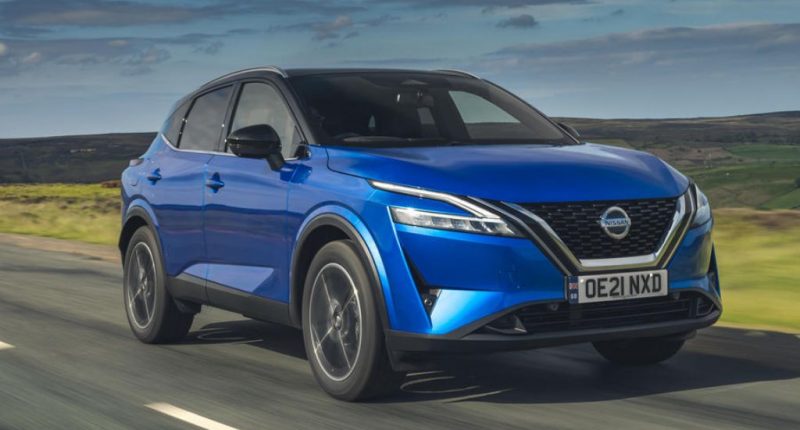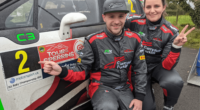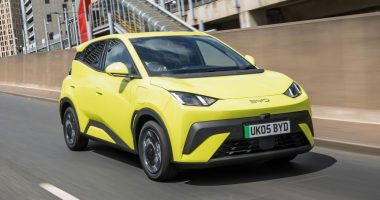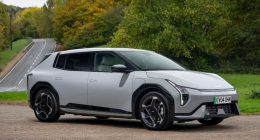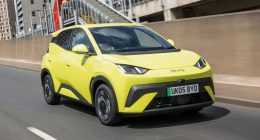Love them or loathe them, family crossovers have been, continue to be, and are set to remain highly sought after. Nissan created the class with the original Qashqai and reinvented it in 2013 with a new version, so can the third-generation vehicle move the game on once again?
Table of Contents
THE QASHQAI IS EVERYWHERE
There is good reason for that. Not only has the Qashqai been a success for Nissan – hence its ‘cash cow’ nickname with thousands sold in Northern Ireland – it has been a torchbearer for the UK’s automotive industry. At the last count, over three-and-a-half million had rolled off the line at its Sunderland factory. To help strengthen its appeal, chinks present in the armour of the previous version – which was really starting to show its age in latter years – have been remedied. Therefore, the powertrains are electrified for the first time, the bodyshell is stiffer and lighter, and the infotainment and in-car technologies are vastly superior. All the while, the third-generation vehicle adopts the instantly recognisable Qashqai profile. It also adds neat details, such as embossing the name on the front bumper and deploying new LEDs that allow for slimmer headlights.
THE LOOK IS BROADLY THE SAME
The Mk2’s design was evolutionary whereas the Mk3 is revolutionary. Depending on which trim you choose – entry-level ‘Visia’, middle of the road ‘Acenta Premium’, lavish ‘N-Connecta’ or ‘Tekna’, or table-topping ‘Tekna+’ – transforms an already interesting proposition into one that will really stand-out during the school run and on weekly trips to the shops. Sitting on 19-inch alloys, our test car’s ‘Magnetic Blue’ metallic paint (£745) and black contrast roof (£425) attracted more than a few cursory glances. This was helped, no doubt, by Nissan’s ‘V-Motion’ grille that is constructed from shiny chrome and glossy plastics. It is a busier design this time around – particularly down the heavily-creased sides – and although all kinds of marketing speak should be taken with a pinch of salt, it does all lend itself to a sharp, modern look.
HOW DOES THE INSIDE STACK UP?
Nissan has clearly listened to the millions of people who run a Qashqai as their daily driver. Quality is noticeably better than before and the infotainment system’s a big step forward, too. Perched at a nice height, the 9-inch display has all the usual features you would expect, from sat-nav to smartphone connectivity, and the screen’s sensible proportions leaves room for a row of physical shortcuts plus proper controls for ventilation. Bar ‘Visia’ and ‘Acenta Premium’, all models receive a fashionable and simple-to-use 12.3-inch TFT instrument display; the look is clean and you won’t be overwhelmed with information, so a quick look is all that’s required to keeps tabs on speed and other pertinent functions. Other than that, there isn’t too much to get excited about. Fit and finish have moved forward but by current class standards is average. Saying that, padded surfaces, visible stitching and metallic details all help.
WHAT ABOUT PRACTICALITY?
The Qashqai has grown in all directions, and as the wheelbase is now longer by 20mm there is more space between those travelling in the front and those perched in the rear. Knee room is up by 20mm, shoulder room by 28mm and the higher roof is definitely noticeable. True, in the grand scheme of things the gains are pretty marginal but some might say the bigger the gulf between two rowdy children, the better. Access to the cabin is easier than before, too, thanks to doors that open to a generous 85-degree angle. As impressive is total space in the boot. Measuring 504-litres, it’s the ace in the Qashqai’s pack, or rather the wipe clean luggage boards are. These can be raised and lowered to add depth, or to create a partition with where food shopping can be placed without fear of it flying around and your eggs ending up being scrambled.
HOW DOES IT DRIVE?
For the foreseeable, only one engine is available: a 1.3-litre four-cylinder petrol turbo with very mild hybrid assistance to help fill in any gaps during acceleration. Performance-wise, the higher tuned of the two Alliance petrols is a decent prelude to the series-hybrid due this year. Pokey, linear and quiet, it’s a real gem of a motor. We sampled it with the 6-speed manual and found the transmission to have a pleasant action and short throw for quick changes to keep the motor on song. If you must have an automatic – or ‘xTronic’ as Nissan likes to call it – then add £1,900 to the final list price. From behind the wheel, this is an immediately likeable SUV. You quickly sense the mission statement for engineers was to mould the suspension for comfort and, except for the worst road anomalies, very few jolts or vibrations find their way up through the main controls. The electrically-assisted steering is progressive, the handling is accurate and the stiff chassis allows for consistent levels of lateral grip. Confident brakes that are full of feel cap off a job well done.
PROS & CONS
+ Stylish inside and out
+ Good tech; generous kit
+ More practical than ever
– Limited engine choice
– Some iffy cabin materials
– Motor needs to be worked
INFOTAINMENT: The 9-inch multimedia system would benefit from sleeker integration but, from an operating point of view, it is fast and feature packed with user profiles allowing tile icons to be dragged and dropped into a folder for quick access. Also welcome is the TFT driver binnacle as this important piece of tech brings the Japanese SUV into line with its rivals. ‘Tekna’ versions also come with a 10.8-inch head-up display.

INTERIOR: Quality and attention to detail is much better third time around as seen by the mood lighting, the textured plinth for the 6-speed manual and the padded door arm rests. However, other SUVs still do it better. Standard equipment is comprehensive and includes boundless driver safety devices that can be switched on and off via the multifunction steering wheel that gradually loads up with feel the quicker you go.

STYLING: 19-inch wheels and optional, metallic blue paint and optional black contrast roof accentuate the Qashqai’s visual appeal, which comes from its super slim LED headlights, detailed flanks and nicely rounded rear. As part of Nissan’s push to reduce exhaust emissions, some of the panels are constructed from lightweight aluminium and the tailgate composite materials. In all, this has shaved 60kg off the car’s total mass.
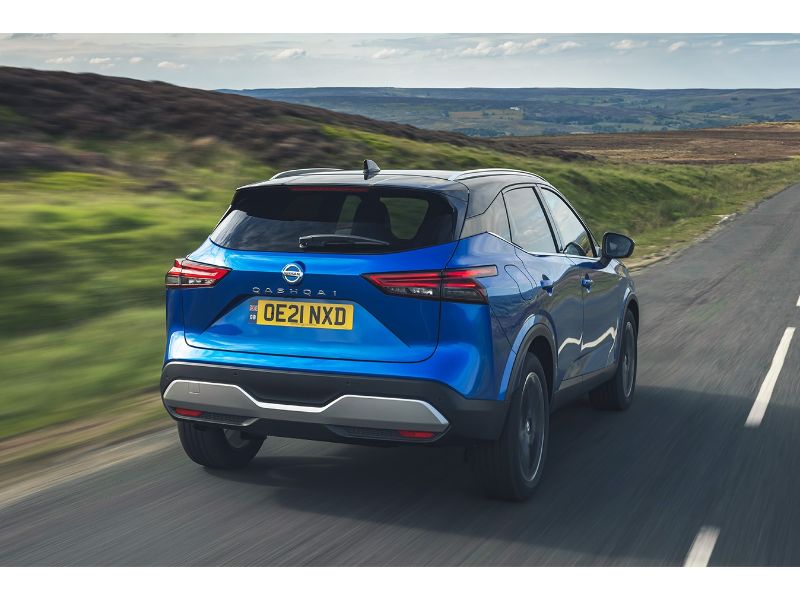
PRACTICALITY: This is one area engineers have paid lots of attention to, particularly the 504-litre cargo area which grows to 1,593-litres if the back seats need to be lowered in order to move around bulkier items. Textured on one side and wipe clean on the other, the boot’s luggage boards can be configured one of 16 ways while still leaving space to stow the parcel shelf beneath them. Access to the back is better and simpler than ever.
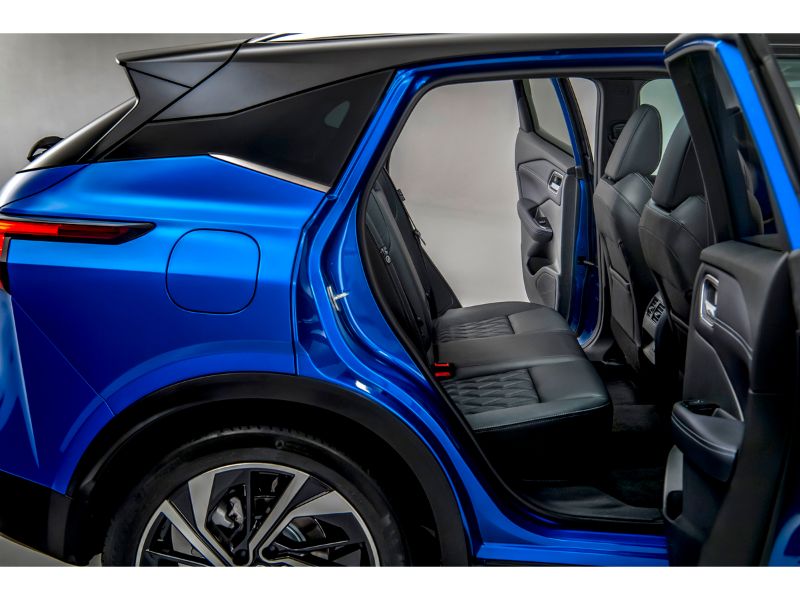
SPECIFICATION
Price: £32,710 (as tested)
Engine: 1.3-litre, 4cyl turbo petrol
Power/torque: 156bhp/192lb ft
Transmission: 6-speed manual, front-wheel drive
0-62mph: 9.5 seconds
Top speed: 128mph
Economy/CO2: 44.1mpg/145g/Km
